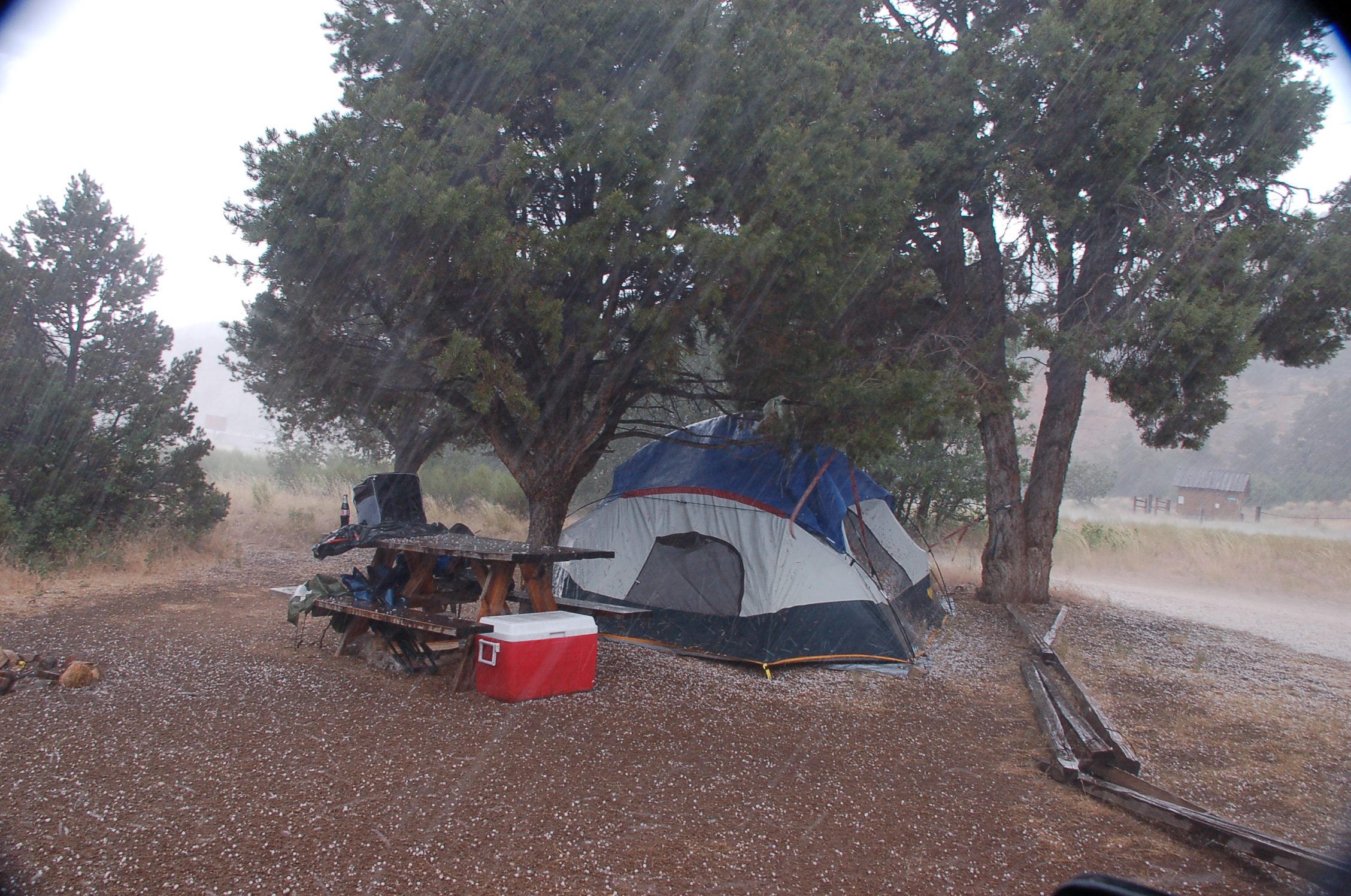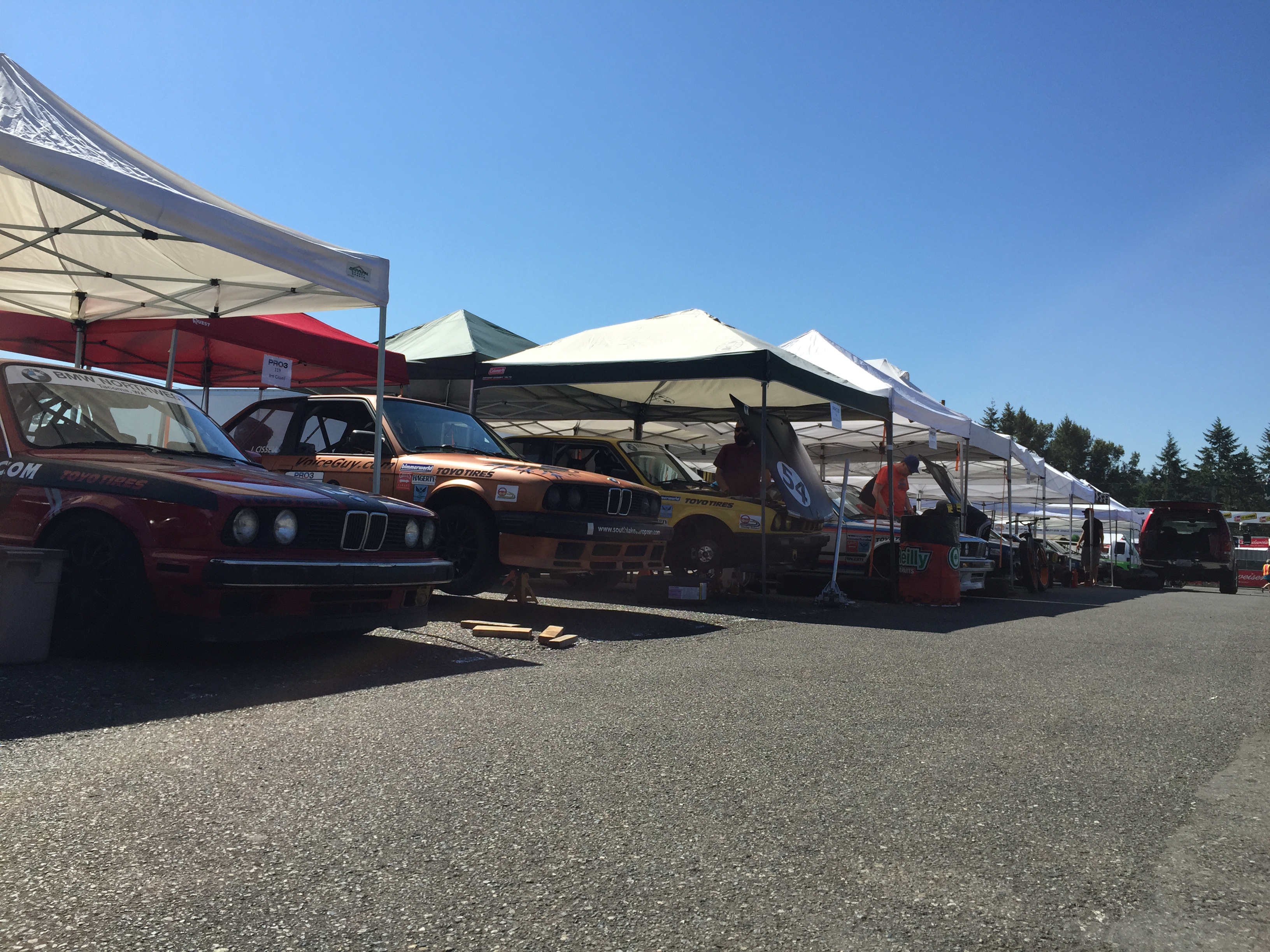 What: For those multi-day track weekends and trips, you don’t need an expensive hotel or RV. Just camp at the track, even in the winter and fall.
What: For those multi-day track weekends and trips, you don’t need an expensive hotel or RV. Just camp at the track, even in the winter and fall.
If I knew then, what I know now: Never and I mean, EVER sleep inside of a trailer unless you specifically designed your heat source for the trailer. Those things become ice boxes at night.
Products that made life easier in this post:
- Tent recommendation
- Sleeping bag recommendation
- Sleeping pad recommendation
Kick off to the sprint season
I have been around racing most of my life in one way or another. One thing that I see more in every type of racing than anything else is people camping at the track (what ever kind of track that is). I have camped out at many of the local tracks in the Northwest and some of the lessons that I have learned have come at both expense of self, as well as sheer trial and error. There are a few things to remember when planning to camp out at the track for the weekend. I will list a few based off of what I have learned over the years!

It’s going to be cold at night. Period.
Step one is to plan for it to be much colder than you think it will be. When you are driving, or wrenching all day on a car in the sun (hopefully!) it is easy to forget that once the sun goes down, also does the temperature. I have had one of the worst nights of my life camping at the track. I had set up ‘camp’ in the trailer we haul the car in. I had my sleeping pad, bag, pillow, I was feeling pretty good about myself. It was mid-April in Washington, and the weather was particularly good for this weekend, with daytime temps almost 70 degrees. The overnight low dropped down to 33 degrees, and being inside of the trailer – with the void between the bottom side of the trailer and the ground, it effectively turns the trailer into a refrigerator. It was cold. I would have been better off on the ground! Car camping can have a similar outcome as well, but you can at least run the car if it gets too cold.

Car camping – it’s like you drove your tent to the track!
I have car camped the past few seasons and have honed in a pretty comfortable set up for me. Everyone will have a different experience with their car, but if you plan ahead it can go well. This past weekend for example. We were racing in Portland, and I set up camp in my 4Runner for Saturday night. I have my gear bag, and duffel with clothes and layers set up with my random-bin on one side of the back of the car with the seats folded down, and have my sleeping pad, bag, pillow and extra blankets if needed on the other for sleeping on. I woke up in the middle of the night chilled even with my sleeping bag fully buttoned up. I grabbed a spare blanket I brought with me and ended up wrapping up the lower half of my legs and feet with it as a extra layer of sleeping bag and that did the trick! It quickly changed a cold night back into a night restful night with little drama.

The facilities, you’ll need something or dig a hole.
One of the bigger things to remember when camping at the track, is planning for facilities, or lack thereof for bathroom breaks and showers. Most tracks will have some sort of hospitality building with bathrooms, but they are not always open all night long. Some tracks are basic, or still new and have only porta-potties on site – which can be odd at night if there is poor lighting. Most places are all paved as well, so the dig a hole method is not an option. For car and tent camping, having something with you that can be used as a fluid receptacle in the middle of the night will make yourself your own hero. Not having to bail out of the tent or car on a cold or rainy night to make a bathroom break can be a big positive impact on your nights rest. I usually grab an empty Gatorade bottle or something similar from the days work and pack it in the car before bedding down for the night. It has been a very positive addition to the track camp out!

The weather for day and night.
Planning for weather is also big. If you are tent or car camping your space is limited. Areas to duck out of the weather are few, and if a tent you can get flooded out quickly. In the Northwest weather can change by the hour especially in the spring and fall. We have raced in snow. That was a sloppy mess on all accounts. Rain is the main thing to be ready for. You want to be sure you have dry stuff to change in to, and a dry place to sleep. Sunshine can be just as big of an issue as well. A tent can get extra warm during the day if it is not left vented. It will also collect moisture even on a clear night, so you will need to be prepared for that.

You’ll still need to eat
Food and snacks, as well as drinks are important as well. For most weekends it is also pretty strait forward. A decent cooler packed well with ice can keep you in great shape for a 3 day race weekend with little issues. Depending on how much work or driving you do, hydration an and nourishment are paramount! Having snacks and non-sugar/sodium based drinks on hand are a great idea. It is easy to scarf a granola bar and little can of apple juice and a bottle of water on any 10 minute break. Having some cash for food that may be available at the track is also not a bad idea. Often there is concession stands, or outside vendors at track events. Food trucks are becoming more popular at events, but you should still plan to be able to feed yourself!
Rest up! Planning and actually putting in effort to get a good nights sleep when at the track is very important. In our early years racing when I was younger. We would stay up late, drink a lot, eat like crap and have a great time all night and then be tired and grumpy the next day when we should be having fun and getting serious work done on the cars. Getting a good restful nights sleep will help you stay at the top of your game, and help prevent mistakes from the track, to the paddock to loading the trailer properly to drive home to see your family or friends. Being comfortable is a big part of getting a good nights rest. Doing and planning for some of the things talked about above will help you maximize your experience at the race track. You can still be the best you that you can be while sleeping on the ground! It just takes the time and effort to zero in what works for you on each level of your needs.

Take these tips. If you are also a hiker or hunter, just use the same level of prep that you would for a trip like that. Plan for a bit worse than you think you will see. Stay warm and dry. Get quality snacks, food and all the water you can drink. And as always, remember to have fun!









